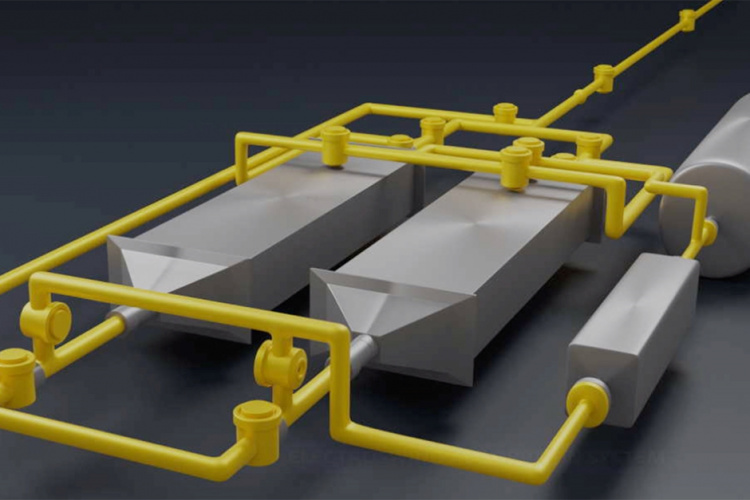
Most methods of removing carbon dioxide from a stream of gas require higher concentrations, such as those found in the flue emissions from fossil fuel-based power plants. Some systems can work with the low concentrations found in air, but the new method is claimed to be significantly less energy-intensive and expensive.
The technique, based on passing air through a stack of charged electrochemical plates, is described in Energy and Environmental Science, by MIT postdoc Sahag Voskian, who developed the work during his PhD, and T. Alan Hatton, the Ralph Landau Professor of Chemical Engineering.
Carbon capture projects given £26m funding boost
Direct action: Carbon capture gears up for climate battle
According to MIT, the device is essentially a large, specialised battery that absorbs carbon dioxide from the air (or other gas streams) passing over its electrodes as it is being charged, and then releases the gas as it is being discharged. In operation, the device alternates between charging and discharging, with fresh air or feed gas being blown through the system during the charging cycle, and then the pure, concentrated carbon dioxide being blown out during the discharging.
As the battery charges, an electrochemical reaction takes place at the surface of each of a stack of electrodes. These are coated with polyanthraquinone, which is composited with carbon nanotubes. The electrodes have a natural affinity for carbon dioxide and readily react with its molecules in the airstream or feed gas. The reverse reaction takes place when the battery is discharged - during which the device can provide part of the power needed for the whole system - and in the process ejects a stream of pure carbon dioxide. The whole system operates at room temperature and normal air pressure.
"The greatest advantage of this technology over most other carbon capture or carbon absorbing technologies is the binary nature of the adsorbent's affinity to carbon dioxide," said Voskian. "This binary affinity allows capture of carbon dioxide from any concentration, including 400 parts per million, and allows its release into any carrier stream, including 100 per cent CO2."
In a power plant where exhaust gas is being produced continuously two sets of such stacks of the electrochemical cells could be set up to operate in parallel, with flue gas being directed first at one set for carbon capture, then diverted to the second set while the first set goes into its discharge cycle. By alternating back and forth, the system could always be both capturing and discharging the gas. In the lab, the team has proven the system can withstand at least 7,000 charging-discharging cycles, with a 30 per cent loss in efficiency over that time.
The electrodes themselves can be manufactured by standard chemical processing methods. While this is currently done in a laboratory setting, it can be adapted so that ultimately, they could be made in large quantities through a roll-to-roll manufacturing process. This system uses about one gigajoule of energy per ton of carbon dioxide captured. Other existing methods have energy consumption which vary between 1 to 10 gigajoules per ton, depending on the inlet carbon dioxide concentration, Voskian said.
The researchers have set up a company called Verdox to commercialise the process.




Poll: Should the UK’s railways be renationalised?
The term innovation is bandied about in relation to rail almost as a mantra. Everything has to be innovative. There is precious little evidence of...